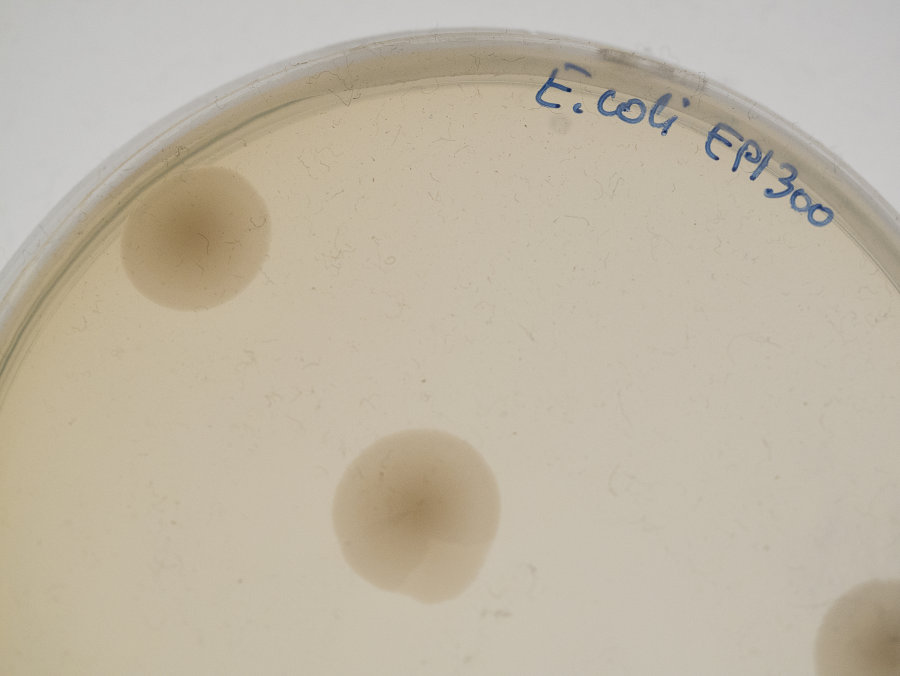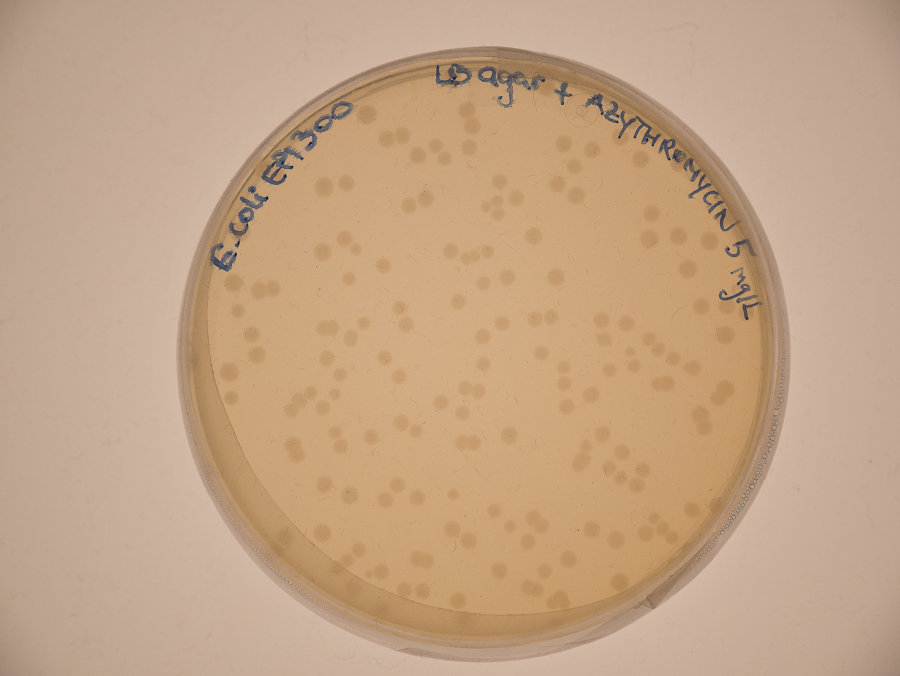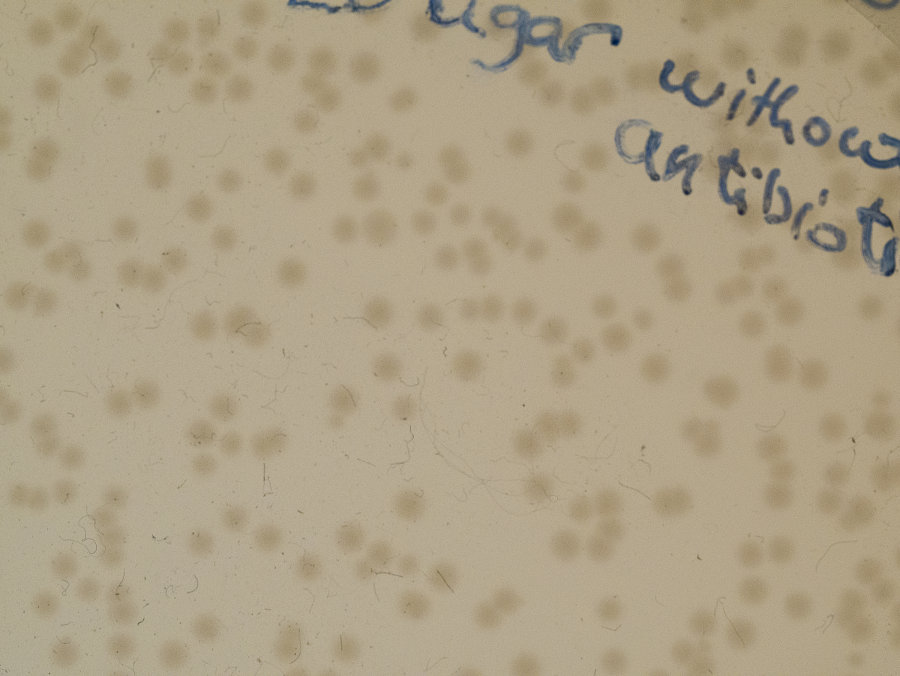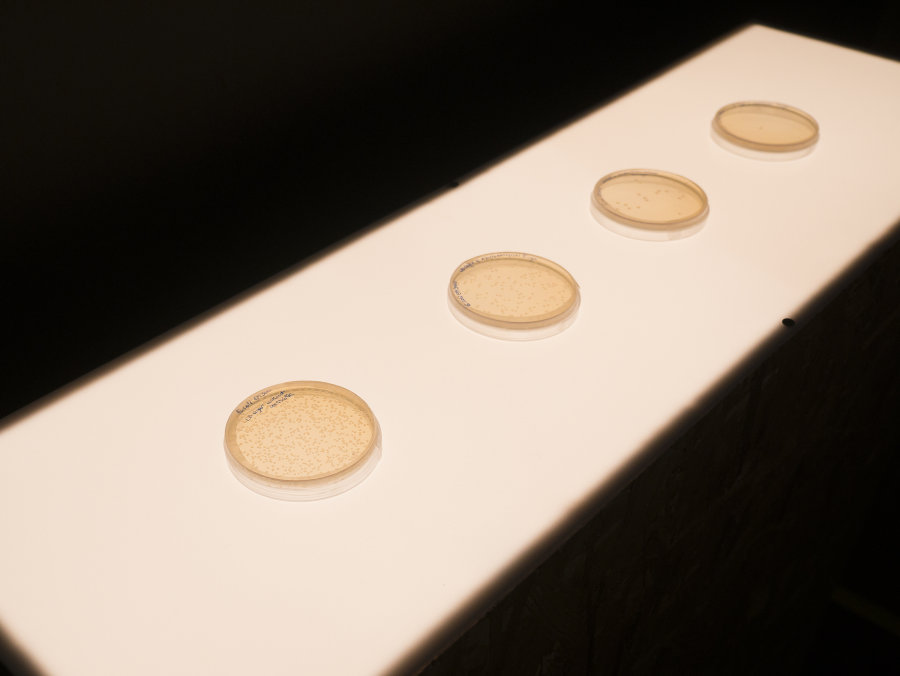Evolution has been defined, ever since Darwin, as descent with modification. Organisms with very short life-spans, such as bacteria, can provide an opportunity to view evolution taking place in front of our eyes.
Escherichia coli, in particular the strains K-12 and B, are among the most common laboratory bacteria as they are harmless and useful for many molecular biology experiments. Genetic mutations occur in these bacteria in the same way as they happen in other organisms. As a consequence, within a large population of E. coli it is likely that several bacteria will have mutations making them resistant to antibiotics. In the absence of an antibiotic, such mutations usually make the bacteria less fit and, as a consequence, these bacteria tend to remain at an extremely low frequency. However, when the environment changes, with the addition of antibiotics, those mutations become a critical advantage giving rise to antibiotic-resistant colonies.
In this display different plates have been seeded with the same large number of E. coli. One plate does not have antibiotic and supports the growth of many bacterial colonies that rapidly reach confluence. The other plates have different antibiotics allowing the observation of the adaptation of bacteria to those new conditions with the eventual emergence of a few colonies of antibiotic-resistant E. coli.





